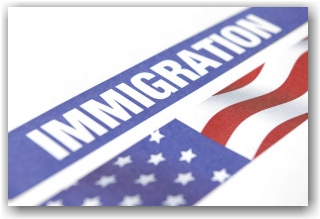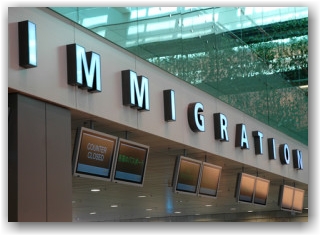USCIS Publishes Final Rule to Modernize Certain Employment-Based Immigrant and Nonimmigrant Visa Programs
Monday, November 21st, 2016 The long-awaited final rule to modernize and improve several aspects of employment-based nonimmigrant and immigrant visa programs, in order to retain EB-1, EB-2 and EB-3 immigrant workers and high-skilled nonimmigrant workers, is moving forward and has made it through the OMB review process. It was published in the Federal Register on November 18, 2016 and will be effective in 60 days. USCIS has also amended regulations to better enable U.S. employers to hire and retain certain foreign workers who are beneficiaries of approved employment-based immigrant visa petitions and are waiting to become lawful permanent residents. This rule goes into effect on Jan. 17, 2017, just before President Obama leaves office.
The long-awaited final rule to modernize and improve several aspects of employment-based nonimmigrant and immigrant visa programs, in order to retain EB-1, EB-2 and EB-3 immigrant workers and high-skilled nonimmigrant workers, is moving forward and has made it through the OMB review process. It was published in the Federal Register on November 18, 2016 and will be effective in 60 days. USCIS has also amended regulations to better enable U.S. employers to hire and retain certain foreign workers who are beneficiaries of approved employment-based immigrant visa petitions and are waiting to become lawful permanent residents. This rule goes into effect on Jan. 17, 2017, just before President Obama leaves office.
Among other things, DHS is amending its regulations to:
- Clarifies and improves longstanding DHS policies and practices implementing sections of the American Competitiveness in the Twenty-First Century Act and the American Competitiveness and Workforce Improvement Act related to certain foreign workers, which will enhance USCIS’ consistency in adjudication.
- Better enables U.S. employers to employ and retain high-skilled workers who are beneficiaries of approved employment-based immigrant visa petitions (Form I-140 petitions) while also providing stability and job flexibility to these workers. The rule increases the ability of these workers to further their careers by accepting promotions, changing positions with current employers, changing employers and pursuing other employment opportunities. This means that you can use the previous employer’s I-140 petition to extend your H-1B with a new employer even if it is withdrawn (as long as it was withdrawn more than 180 days after approval), or in the event of the termination of the employer’s business. So, there is no I-140 portability; you will still need a new labor certification and I-140 petition to file your adjustment of status application.
- The final rule provides two grace periods of up to 10 days, consistent with those already available to individuals in 13 some nonimmigrant classifications, to individuals in the E-1, E-2, E-3, L-1, and TN classifications. The rule allows an initial grace period of up to 10 days prior to the start of an authorized validity period, allowing nonimmigrants in the above classifications a reasonable amount of time to enter the US and prepare to begin employment. The rule also allows a second grace period of up to 10 days after the end of an authorized validity period, which provides a reasonable amount of time to depart the US or take other actions to extend, change, or maintain lawful status.
- Establishes a grace period of up to 60 consecutive days during each authorized validity period for certain high-skilled nonimmigrant workers when their employment ends before the end of their authorized validity period provided their authorized stay is valid for at least 60 days after such cessation. If not, the grace period will end on the date the authorized date is set to expire. This will obviously enable own to more readily pursue new employment and an extension of their nonimmigrant status.
- The Final rule allows allows certain high-skilled individuals in the United States to apply for work authorization, given:
- They are the principal beneficiaries of an approved Form I-140 petition,
- An immigrant visa is not authorized for issuance for their priority date, and
- They can demonstrate compelling circumstances exist that justify DHS issuing an employment authorization document in its discretion. Such employment authorization may only be renewed in limited circumstances and only in one year increments.
- Automatically extends the employment authorization in the same category and validity of Employment Authorization Documents for up to 180 days from the date of the prior EAD’s expiry (EADs or Form I-766’s) or until djudication of the EAD nrenewal application, for certain individuals who apply on time to renew their EADs. The Form I-9 rule is also updated to permit an I-797 receipt notice to be accepted as a permissible I-9 document, in conjunction with the expired EAD, to re-verify the foreign national’s work authorization. This additional 180-day period will not apply to those categories that first require the approval of an underlying application before the EAD renewal can be adjudicated.
- Eliminates the regulatory provision that requires USCIS to adjudicate the Form I-765, Application for Employment Authorization, within 90 days of filing and that authorizes interim EADs in cases where such adjudications are not conducted within the 90-day timeframe.
- Clarifies various policies and procedures related to the adjudication of H-1B petitions, including, among other things, providing H-1B status beyond the six year authorized period of admission, determining cap exemptions and counting workers under the H-1B cap program.
For more information, please refer here for the Final Rule. If you have any questions, please contact our office. We will continue to keep you posted on the implementation of these new policies.

